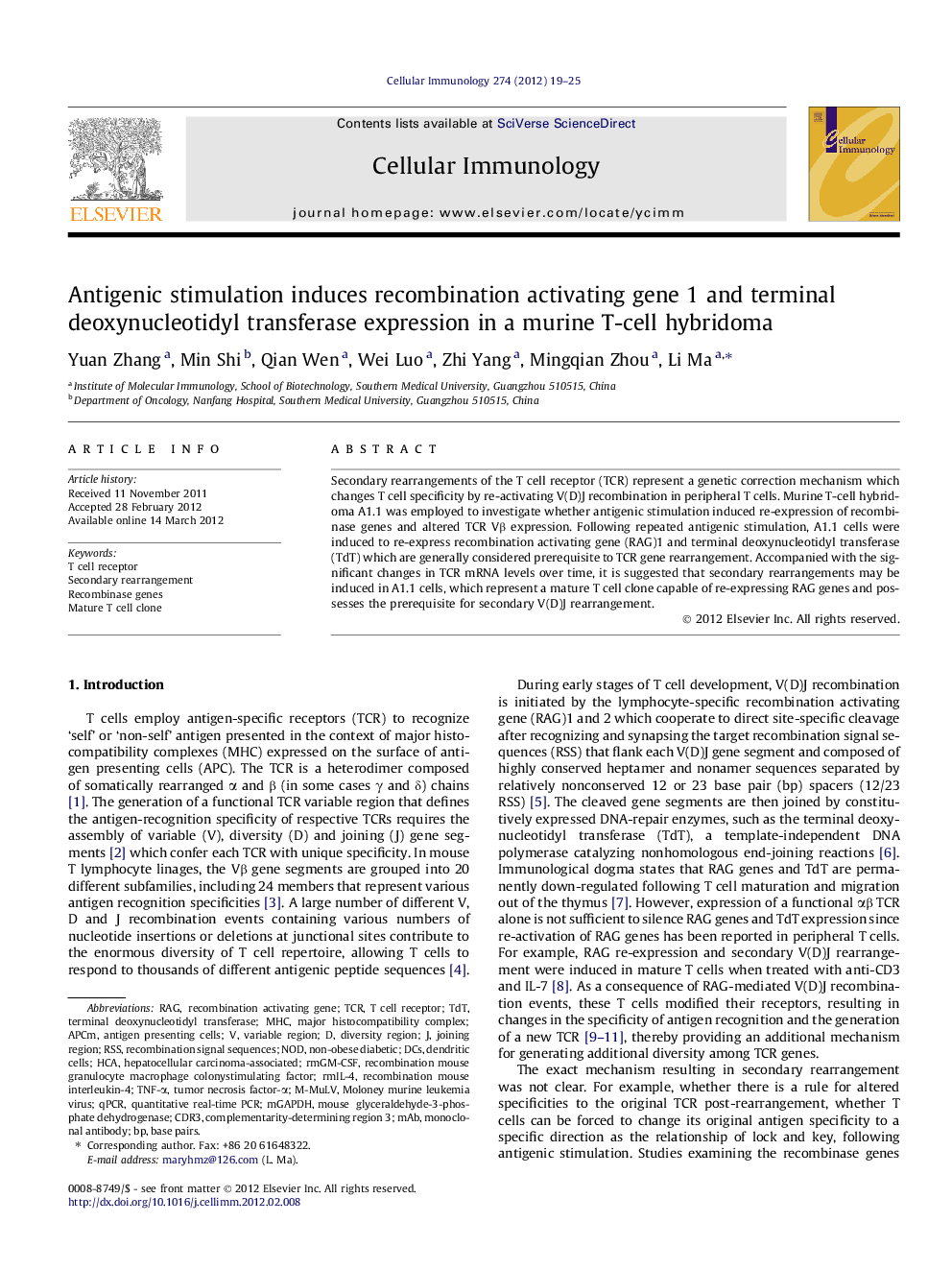| Article ID | Journal | Published Year | Pages | File Type |
|---|---|---|---|---|
| 2167249 | Cellular Immunology | 2012 | 7 Pages |
Secondary rearrangements of the T cell receptor (TCR) represent a genetic correction mechanism which changes T cell specificity by re-activating V(D)J recombination in peripheral T cells. Murine T-cell hybridoma A1.1 was employed to investigate whether antigenic stimulation induced re-expression of recombinase genes and altered TCR Vβ expression. Following repeated antigenic stimulation, A1.1 cells were induced to re-express recombination activating gene (RAG)1 and terminal deoxynucleotidyl transferase (TdT) which are generally considered prerequisite to TCR gene rearrangement. Accompanied with the significant changes in TCR mRNA levels over time, it is suggested that secondary rearrangements may be induced in A1.1 cells, which represent a mature T cell clone capable of re-expressing RAG genes and possesses the prerequisite for secondary V(D)J rearrangement.
► Murine T-cell hybridoma A1.1 displays an atypical secondary rearrangement of V–VDJ joint. ► Recombinase genes RAG and TdT can be induced to re-express in A1.1 cells following stimulated. ► A1.1 cells possesses the prerequisite for secondary V(D)J rearrangement.
